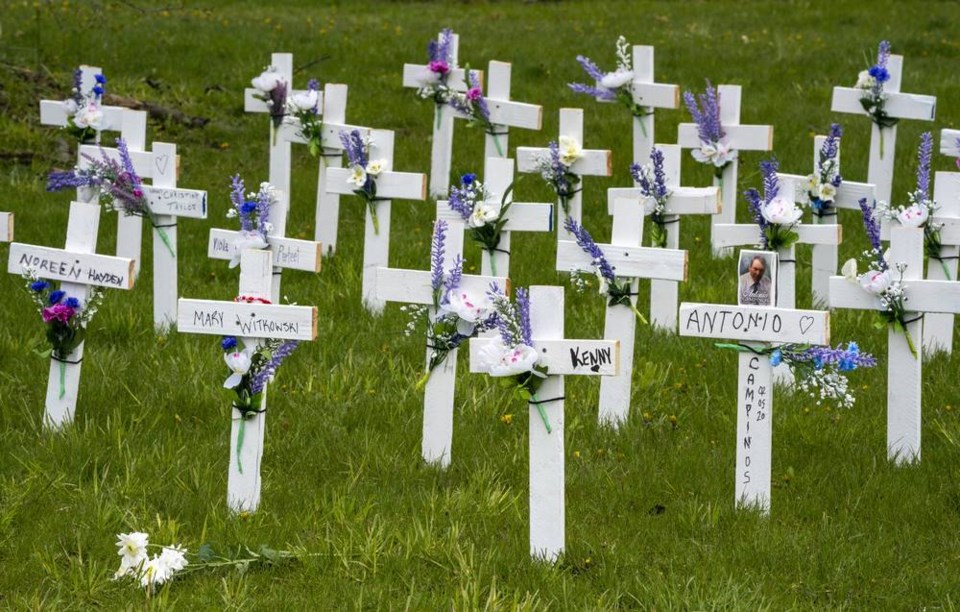A new report by the Canadian Institute for Health Information (CIHI) presents a devastating indictment of long-term care in sa国际传媒.
The study found that between March 2020 and February 2021, 69 per cent of coronavirus deaths in sa国际传媒 occurred in long-term care facilities. That was the worst record among 17 OECD countries, which collectively averaged a fatality rate of 41 per cent.
Specifically, outbreaks occurred at 2,500 care homes nationwide, infecting more than 80,000 staff and residents, and killing 14,000 residents.
Quebec reported by far the largest number of long-term care deaths during the first wave of the outbreak, with 58 fatalities per 100,000 people. The Canadian average was 20, while sa国际传媒 suffered only three deaths per 100,000 population.
Things became so bad in Ontario and Quebec that Canadian Armed Forces personnel were deployed at 32 of the most severely affected homes.
It might be thought this would have served as a wake-up call. But it did not.
One of the most troubling findings is that during the second wave of the outbreak, several provinces, sa国际传媒 among them, reported more long-term care deaths than during the first.
The implication is that lessons that should have been learned during the first wave, in fact were not.
Among those lessons were that long-term care residents frequently received less medical care than elderly people living at home, despite being far more vulnerable.
They were also less likely to be admitted to hospital for the treatment of serious conditions and infections.
Second, at the beginning of the outbreak, staffing ratios at long-term care facilities were frequently well below the appropriate standard of care, and absenteeism was often chronic. While some improvements have been made, inadequate staffing ratios remain a concern.
Third, infection control and hygiene management were, and continue to be, an ongoing problem. Better inspection by provincial health ministries and public health officers is required to correct these deficiencies.
Lastly, too many older buildings offer inadequate living space. In some facilities, as many as four residents share a bedroom. Crowding is one of the contributing factors to infection spread.
How critical these recommendations are becomes apparent as a third coronavirus wave now sweeps the country.
Here in sa国际传媒, provincial health officer Dr. Bonnie Henry has responded with far-reaching new restrictions on social activities. Both Premier John Horgan and Henry have characterized this new wave as a formidable challenge exceeding anything to date.
While vaccination may eventually tame the outbreak, we cannot allow long-term care facilities to fall victim a third time due to the many inadequacies revealed by the CIHI report.
The question is how to follow up. The federal government has several times suggested the need for a national nursing home strategy.
For a variety of reasons, the provinces are unlikely to grant Ottawa regulatory powers.
Nevertheless, it should be possible to convene a federal/provincial panel to oversee the introduction of best-practice standards on a nationwide basis.
No doubt additional funding will be needed. Some provinces and some facilities will plead poverty.
But the most revealing aspect of the CIHI report is that, in the main, the shortcomings most in need of attention are poor staff training, deficient infection-control regimens and insufficient medical care.
Dealing with these inadequacies should not require vast new resources. Rather, we need a concerted effort to bring our country鈥檚 long-term care facilities up to the same standard of care that most developed countries have already achieved.
For that is the take-home message. While sa国际传媒 generally rates well in most of our health and social services, we have fallen woefully behind in this one essential area; caring for our country鈥檚 most vulnerable citizens.
With a third coronavirus wave breaking upon us, and who knows how many more to come, this deficiency must be corrected, and that needs to happen now.



